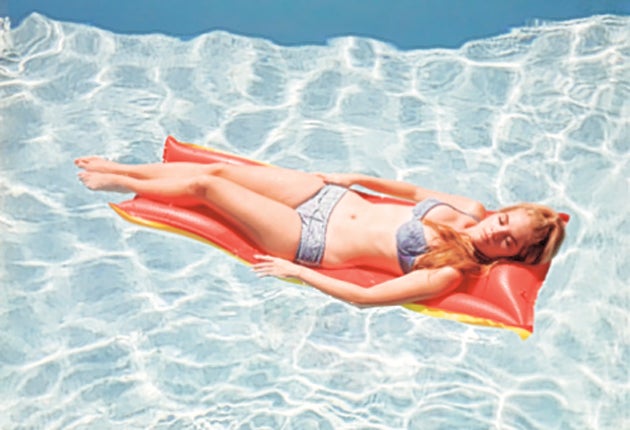The Timeline: Suntans

1st century BC, Greece
A chaste Greek woman would have spent her life indoors, and hence been pretty pale. But the philosopher Xenarchus also reported on tanning habits of Greek prostitutes: "There are young ladies here at the brothels who are most amenable, ladies you are not banned from looking at as they sunbathe with bare breasts, stripped for action in semicircular ranks."
10th century AD, Britain
A pale complexion was favoured for many centuries, because it indicated a degree of wealth that allowed you to stay indoors – tans were for peasants. By the middle of the 10th century, arsenic was the complexion whitener of choice, and despite being poisonous, remained in fashion for some time: Elizabeth I used it in the 16th century.
Late 1700s, Britain
Some of Jane Austen's most famous heroines were praised for bronzed looks. Marianne Dashwood, the beauty of Sense and Sensibility, is "very brown", and when Pride and Prejudice's Elizabeth Bennet is described in shocked terms as "brown and coarse", Mr Darcy finds her "rather tanned", deeming this "no miraculous consequence of travelling in the summer".
1903, Europe
The scientist Niels Finsen was awarded a Nobel Prize for his work on the benefit of sunlight on infectious diseases, and the upper classes began holidaying at the coast for health reasons. The tans they sported became a symbol of both health and wealth.
1923, France
The tan was given a boost by an icon of French chic. Stepping off a yacht on the Côte d'Azur in 1923, the fashion designer Coco Chanel had caught a little sun and her elegant limbs were distinctly brown. Suddenly the sun-kissed look was in.
1930, England
"Sunbather" was still pretty much a euphemism for "nudist" in the early 20th century, and it was illegal to strip off except on designated beaches. At the Welsh Harp reservoir in Hendon, Middlesex, the landowner let unemployed youngsters sunbathe. But in June 1930, the sunbathers – some completely naked – were mobbed by a disapproving crowd.
1970s/1980s, worldwide
Indoor tanning beds began to be introduced, helping people fake that luxury winter-sun look. The 1980s also saw fake-tanning lotions improving, and achieving mainstream popularity.
2010, Iran
Brig Hossein Sajedinia, Tehran's police chief, has announced a crackdown on women violating Islamic law, which stipulates that women should be covered up. Comparing suntanned women and girls to "walking mannequins", he warned that immodestly dressed women showing off a tan would be arrested and imprisoned.
Join our commenting forum
Join thought-provoking conversations, follow other Independent readers and see their replies
Comments
Bookmark popover
Removed from bookmarks